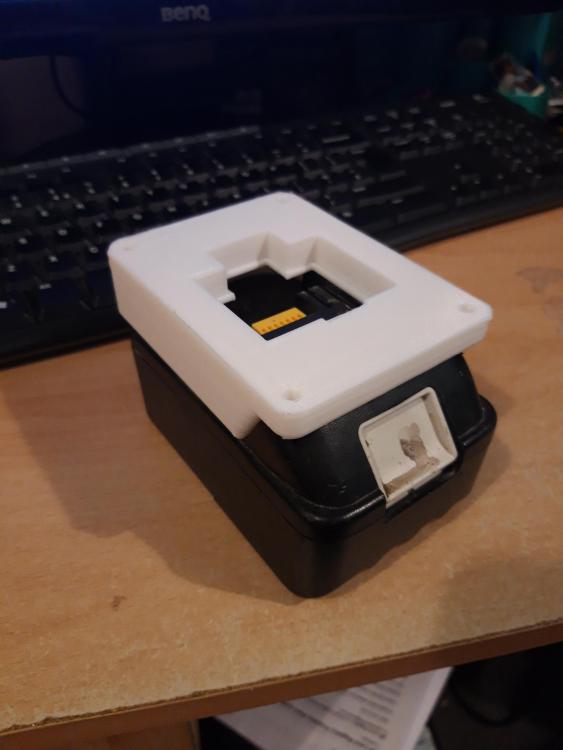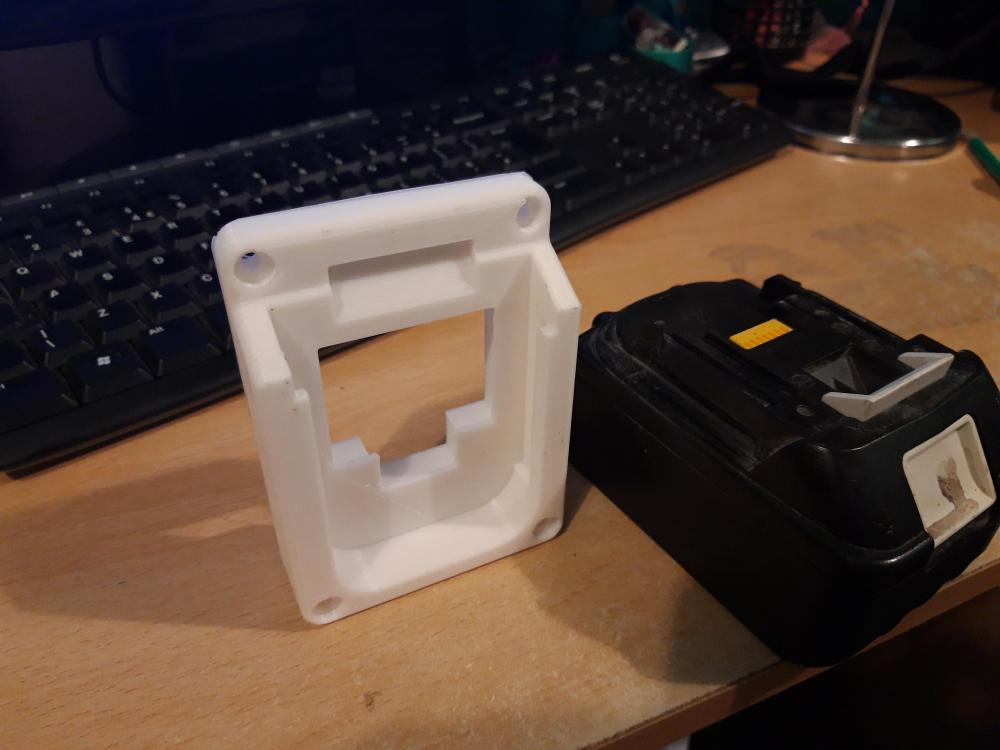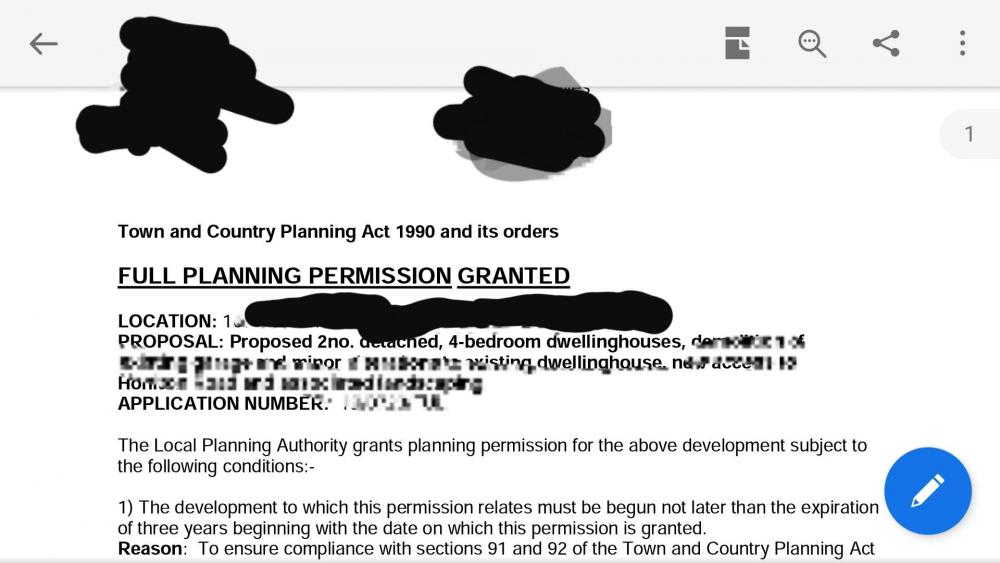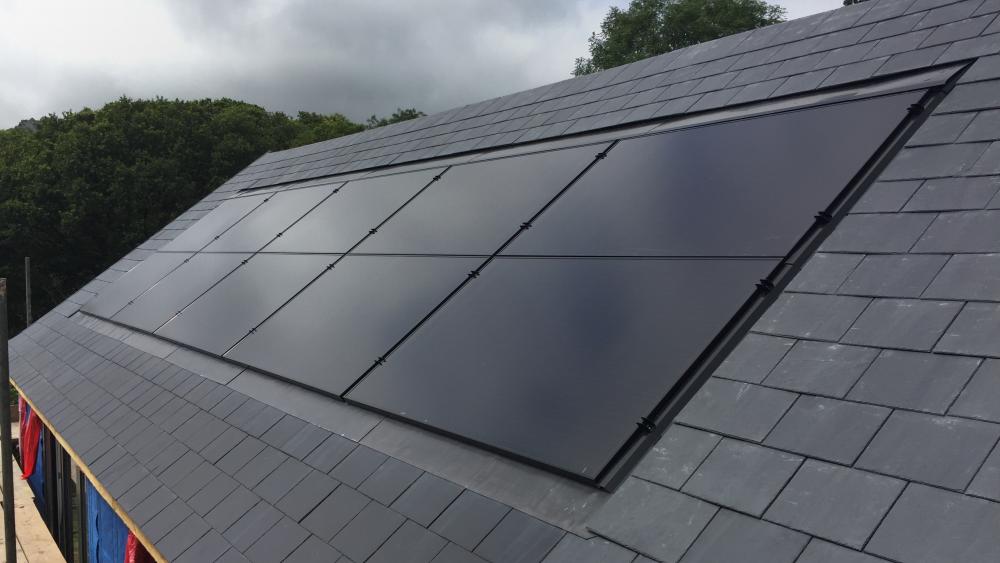Leaderboard
Popular Content
Showing content with the highest reputation on 01/04/20 in all areas
-
In my view, the FiT largely succeeded in what it set out to do, which was kick start the adoption of microgeneration at the domestic level. It provided just the incentive needed to create a boom in microgeneration system take up, which then resulted in a marked reduction in the price of panels, inverters etc. Certainly the FiT, and in particular the MCS, was/is very badly managed, and like pretty much all government subsidy schemes it was many of the MCS accredited companies that cashed in, rather than consumers, although it's clear that, with FiT in particular, consumers have actually seen a worthwhile benefit from a government subsidy. Many government subsidy schemes don't end up providing a subsidy for the people they are aimed at all, good examples being insulation schemes, where the cost to the customer is much the same whether there's a grant or not - the grant just gets taken as extra profit by some installers. The same applies to OLEV grant funded car charge point installations, the electricians installing those are currently getting around £600 to £800 per day, or their bosses are (nice work if you can get it!). Certainly FiT was unsustainable, but I don't think it was ever meant to be sustained, it was really an incentive scheme, to bring about a step change in thinking, and arguably it has contributed a great deal to that. The main problem with FiT was that it was incompetently managed. The rates should have been reduced gradually, as the level of take up increased, rather than the government waiting until they saw there was a major problem and just shutting the system down almost overnight. This isn't unusual in government, though. They see a political benefit to be had from promoting and implementing an idea, then lose interest and forget about it until it causes a near-crisis.2 points
-
As required by law, the big energy companies have introduced their export tariffs. https://www.recc.org.uk/news/smart-export-guarantee-tariffs-introduced1 point
-
Good evening, I am also looking at battery storage, but find Tesla very expensive, there are others creeping in. My next door neighbour has bought a forklift battery pack, and had that installed, it does work fine. please keep in touch, stephen2margerison@gmail.com regards stephen1 point
-
I guess so judging by this:- "Paul Tomlin, owner and operator of Green Driving School in Stoke-on-Trent, Staffs, was one of the first to make the switch and has been using an electric Nissan Leaf to teach automatic learners since 2011."1 point
-
1 point
-
What you say is pretty much all you can do Unpack the flooring and leave it where it’s going to be laid for week if possible As long as the place isn’t damp you should be ok If you employed a company to supply and lay They would more likely turn up with it in there van Or drop off a couple of days before and do what you are doing1 point
-
1 point
-
Is there going to be central heating/ufh at some point? The last thing you want is to lay it and then turn the heating on and it shrinks.1 point
-
Makes me wonder what to do next - I am about to order the 7+ Kw of solar panels and I know that is too much to export all at once but given that it is spread over the roof segments. 3.66Kw 20deg west of South @ 30deg elevation - no shade, 2Kw 20deg south of East @ 30 deg - shade early AM and 2Kw 20deg north of West @ 30 deg no shade I think our max output will be slightly above 5 although I have room for about 5 Kw more on the East & West roofs combined. I had intended to control loads and charge things like the Sunamp using solid state contractors, rough, ready and somewhat wasteful, so as to keep the peek below 3.66Kw, so I used it all and export a bit but I am now thinking I could export if I went for a G59 application - used an inverter system with the relevant protection - so no relays, the other phases are on a pole on our land! Even at 5.5p I cannot see it being a good financial call but imagine what it will do for the SAP rating! Need to do the math!1 point
-
One could argue the previous time limited FiT schemes were the political tokens, set by legislation with taxpayer subsidy at unsustainable levels. In comparison the SEG rate is the politicians stepping back and letting commercial forces take their course, for better or worse... To be fair, you never ever set out to maximize the amount your system exports; quite the opposite you've designed it to minimize that exact number. Anything multiplied by a very small number will yield a very small number. With a typical 4kW system that exports 50% of its generation, I'd be expecting about £100 a year. That's still pretty crap - it will struggle to cover the MCS installation tax over its lifetime - but makes an illustration more representative of the typical ("non enthusiast") setup. As a more real world example, my parents are on an early FiT and export well over 50%. I've tried to at least get them an immersion redirect but they won't as they worry the cylinder is too old and don't trust the immersion in it or will be damaged or leak. To be fair, it must be getting on for 50years old now, but they won't consider replacing it until it finally dies and is done by the homecare cover, no doubt in yet another botched rush job. Question now is where prices go from here, can people be bothered to shop around for this in addition to price they pay for import which push up competition, or they just sit there at 5p and fail to even track inflation. And the biggest, British gas, hasnt even revealed its hand yet. Perhaps one reason the smaller players may succeed here is if they can offer deals the big ones are constrained to by legislation? E.g. AIUI big players must offer tariff to all regardless of who is the supplier, but can a small player offer special deals for people that have both import and export provided by them? Certainly looking at Social Energy website I get the feeling their model assumes they're providing both.1 point
-
I would question if you need heating in that area. In our last house I fitted UFH in the hall and on the landing. But I found because both the hall and landing were surrounded (apart from the front door) by other heated rooms, that the heating in the hall and landing never ever came on. It was in hindsight a waste of effort heating those zones. In the present house I did not bother with heating in the hall or landing.1 point
-
1 point
-
Hang on...I've been reading elsewhere: "Dewalt and Makita have the BMS/LV cut off in the tool. Ryobi, Ridgid, Milwaukee all have a basic BMS in the battery. Makita batteries marked with a * (star) or yellow marking have over-heating and over-discharge protection. The non-star ones do not".1 point
-
There is a company near me advertising this, without insulation under that slab you might as well cut your money up and throw it out of the window.1 point
-
definately easy enough, though had the brickie known, he would have built a one block thick wall instead of half where they joined at the ends to avoid staggering them, he couldn't understand why it wasn't a slab as he said it would have been cheaper.1 point
-
Get a good quality Spanish slate (CUPA), the H3 is just as good as Scottish slate and you can get them in random sizes1 point
-
The forum needs a good definitive reference thread on blocks. When I was starting out in self build I wasted hours online trying to comprehend the scope of blocks available and their pro's and con's.1 point
-
Best way to do it is to have your temp site supply be your final supply. E.g, on my site, I'm in the process of building the temp kiosk at the property boundary that the power company will bring their cable to. Once the house is ready, I'll dig a trench from the temp kiosk to the house and lay duct and cable. Then it's a matter of taking cable from kiosk to house. So, your temp connection application should be rated for your final demand.1 point
-
And....... Granted, after 27.6 weeks, not that I am counting ? Not even a request for an extension with the decision. Massive thank you to the buildhub community for the help getting this through! Can't quite believe it's actually got permission after the sites history of refusals and us asking for more than those! Today feels like a win!1 point
-
Hmmm: makes me wonder whether there's any mileage in - for key parts of our builds - a Labour Exchange. Off the top of my head, for my build, I can think of at least four things that would be sooooo much easier with just a bit of help. Just a bit of muscle and good humour. I'm not talking about specialised (say) Sparky work, or the clever bits of plumbing that many here seem to do. In exchange for a similar amount of time and effort on 'your build' .... Or is that too hard to organise? Or make work?1 point
-
@Visti A couple of points: - in the situation you’ve described s/c screed is normally a minimum depth of 50mm so you’d need that much over the top of the pipes. - check that the beams of your beam & block floor aren’t pre-cambered. If they are then this will affect your set-out and screed thickness calculations. - you’ve said that you’ll be power floating the sand cement screed but I didn’t know you could do this. I’ve only ever seen concrete floors being power floated.1 point
-
Stupid question alert. We have finally located our water supply (without breaking through it with a digger bucket ) and hope to get some advice on how to run a temporary and then permanent supply. We will be living in the current house still for a few months so need to keep a supply to the house. We need a temporary supply directly to our caravan and outside loo for the duration of the build. We will also need to provide access to water for the build (some sort of tap set up?). The meter / stopcock is not at the boundary (over the other side of the road). We have located the pipe at the boundary. Can we turn the meter off, cut the water pipe, install some sort of three way connector in to take the supply in different directions and then, when we knock the main house down, cap off the bit of the pipe that serves the house? Firstly, is this in any way a sensible thought? If not, what do you suggest? If it is, are we allowed to do it or do we have to notify Thames Water and pay them to do it?1 point
-
You don't really want it on the underside of the slab, but I'd say 50mm up would suffice. A pita to facilitate though, so I'd go for clipped to the mesh and use caution when fixing down. Bearing in mind that with accurate plans you would be laying the pipes away from the stud walls at the very least so this risk can be reduced or mitigated against with reasonable sense / ease.1 point
-
Kay Metzeler in Chelmsford (Essex) At least, they make the grey insulation that was mentioned (as well as EPS 75, 100, 200 et.al.)1 point
-
The issue is not the current carrying capacity of the cable, if it was then 25mm2 would be fine. Rather, over that length, it's the voltage drop that will dictate the size of cable that you use. It would not surprise me in the least to find you do indeed have to use something as big as 70mm, I would need to look it up and do the calcs. The DNO use larger cables, here the main running down the road is 95mm2 which then they tap off a 25mm feed for the short tun to each property. If you get the DNO to move the supply closer to the house, the cost will be for such a large caable, and the non contestable work of them making the connections, which they will almost certainly do live. It will cost a lot more than you just buying suitably large cable. Unless of course moving it closer to the house would mean shortening the DNO's cable run? It depends where it comes from? +1 to getting a 3 phase meter fitted and running 3 phase to the house. By spreading the load over 3 phases you might be able to reduce your max demand per phase and use a smaller cable, though of course more cores in the cable. I would use SWA buried direct in the ground. Single cores in conduit is acceptable, but I am not sure I would describe an underground duct as "conduit" so I would not use singles.1 point
-
So here's the South roof. The result of 3 days work by me and two friends. If you combined the knowledge of all three of us then I reckon you'd be half way to a pro roofer Actually one of the guys has done a lot of roofing but he's a bit agricultural, took me ages to convince him to use slate and half, he said it was fussy crap Note that we decided to scrap the sticky flashing stuff supplied with the GSE solar trays and instead went for lead. I think it was the right decision in our exposed position. I really don't like the way the flashing trays 'kick' the slates at the sides and top but if you install them to spec then there is nothing you can do about it. But I'm probably being fussy! If you're very observant you'll notice the colour difference on the slates below the solar PV. That's because even with two coats of patina oil as soon as it rained it chucked white residue all over the slates so I decided to clean it off. How did we do?1 point
-
We also had one - needed to commission a written scheme of investigation from an approved firm to discharge the planning condition and then have a junior on site for a day, plus follow up report. All cost about £1000 from memory. To be fair, we were excavating about 450m3 for the basement and there had been previous neolithic finds a few 100m away so no wriggling out of it for us. I'd talk to an Archeological consultant and get their view, given you're having a raft and not deep trenches, plus prior disturbance.1 point
-
This tallies with our recent ordeal in getting our VAT reclaim sorted (finally resolved by a letter received yesterday, nearly 4 months after I started the process). There seems to be a central government drive to get all departments to focus on collecting as much tax owed as possible, which is a laudable aim, but the way some departments are going about it is a bit OTT. I've already related the tale on Ebuild about out Council Tax snoopers, breaking in to the site at night, climbing fences, ignoring PPE warnings and (not wearing any PPE!) to look in through windows and see if the house was habitable enough for them to start charging Council Tax on. I got annoyed enough to formally complain, send a copy of the CCTV and legally deny access by the council or anyone they employed without my express written permission, saying that their breach of site safety rules jeopardised my site insurance premium and therefore constituted aggravated trespass. The stupid thing is that it meant that I had helpful advice from many forum members, including some case law on when a house became a "rateable hereditament", and so liable for Council Tax. I could then easily delay paying it by making sure that I didn't officially have a potable water supply in the house until just before completion. That meant they probably lost a years worth of Council Tax, simple because they'd annoyed me by breaking in.1 point
-
Aren't these the forms you need to send in?... The CIL exemption form is here (must be granted before you start). https://ecab.planningportal.co.uk/uploads/1app/forms/form_7_self_build_part_1_exemption_claim.pdf The commencement form is here (must be received by the Collecting Authority before you start). https://ecab.planningportal.co.uk/uploads/1app/forms/form_6_commencement_notice.pdf Make 100% sure you follow the rules or you become liable for the CIL. Do not start before the exemption is granted and they have received the commencement form (post with tracking). Note that the commencement form asks for a commencement date. Make sure that's after the decision date they give you.1 point
-
Can you give an idea of the floor build up ..?? If its slab - 150mm PIR - screed then ideally the cold needs to be somewhere in the insulation. You can run the feed in 10mm pipe so it's just a case of cutting a groove in the lower insulation and laying the pipe in, tape in with duct tape and lay the next layer of insulation on top (assuming you're using two layers not one !!) Another option is to use 22mm conduit as duct and pull the 10mm through later. Ideally the pipe / conduit needs 15mm of insulation all round but in reality the slab below insulation will never get below 6-7c so freezing and heat loss is not an issue and at a push you can lay the pipe on the slab and shape the insulation over it if you're only putting down a single layer.1 point
-
Building Control When you think you are ready ask BC to make a final inspection. Our BCO wanted to.. a) witness us pressure test the drains b) check that all panes of glass were coated (he had a tester with him) c) check all safety glass was marked with the appropriate standard. d) I think he also asked for some paperwork from the electrician. Planning Make sure any planning conditions have been discharged. There is a fee for discharging conditions and to minimise that try and get all the conditions discharged in one go. Postal Address The council are responsible for allocating the formal address/house number etc. Some councils have different names for this department but try "The Address Development Team" or ask the planning department receptionist what it's called. They will send you a form on which you can enter a house name. Council Tax Well before completion the council sent us a letter from the Valuation Office (I think) stating that they thought we would be complete on some random date. We wrote back to tell them a more likely date and they accepted it. Council tax bills will arrive soon after. Telephone Get the connection process started asap as this can take awhile. We were in our house 6-8 weeks with no phone while they upgraded overhead lines. VAT Refund You have three months to submit your reclaim from the date of completion. You can only claim for things purchased prior to completion so don't forget any materials like paint that you intend to apply after moving in. Note that some things like plants and landscaping materials can only be reclaimed if they appear on a landscaping plan submitted or required as part of your planning application. Check to see is any trades have charged you VAT in error as this cannot be reclaimed from HMRC.1 point
-
Our nearest pole was about 20 yards down the road. My builder ran a cable underground to the bottom of the pole and Openreach happily connected it up once they got organised. We left enough cable in a coil at the bottom to reach the top with some spare. The main problem was Openreach disorganisation. Someone from BT/Openreach rang me once a week to tell me that they were "working on our connection" and that went on for a long time. Then one week they stopped calling. I rang them and the lady I spoke to insisted that the work had been done, which it clearly hadn't as I could still see the coil of wire. She was so convinced that the computer was right that the only solution was to agree with her that it must be faulty. The poor old fault engineer that arrived insisted on testing my line at the master socket before he would listen to me. Once he understood what the real problem was he made a few calls and things got sorted very quick. PS: I don't think we made BT/Openreach aware in advance that we would be putting in an underground cable to the pole. I think we just ordered a new connection that they were probably expecting to be an overhead. The engineers were happy to have an easier job than they were expecting.1 point
-
@joe90 No. Not the billionaires end. We re the ruff part your lot was looking down on from the top of the hill. Ldub =Lawrence weston. ?0 points
This leaderboard is set to London/GMT+01:00







.thumb.jpg.bac90f3bbf6868cf2118d010d936c99d.jpg)









